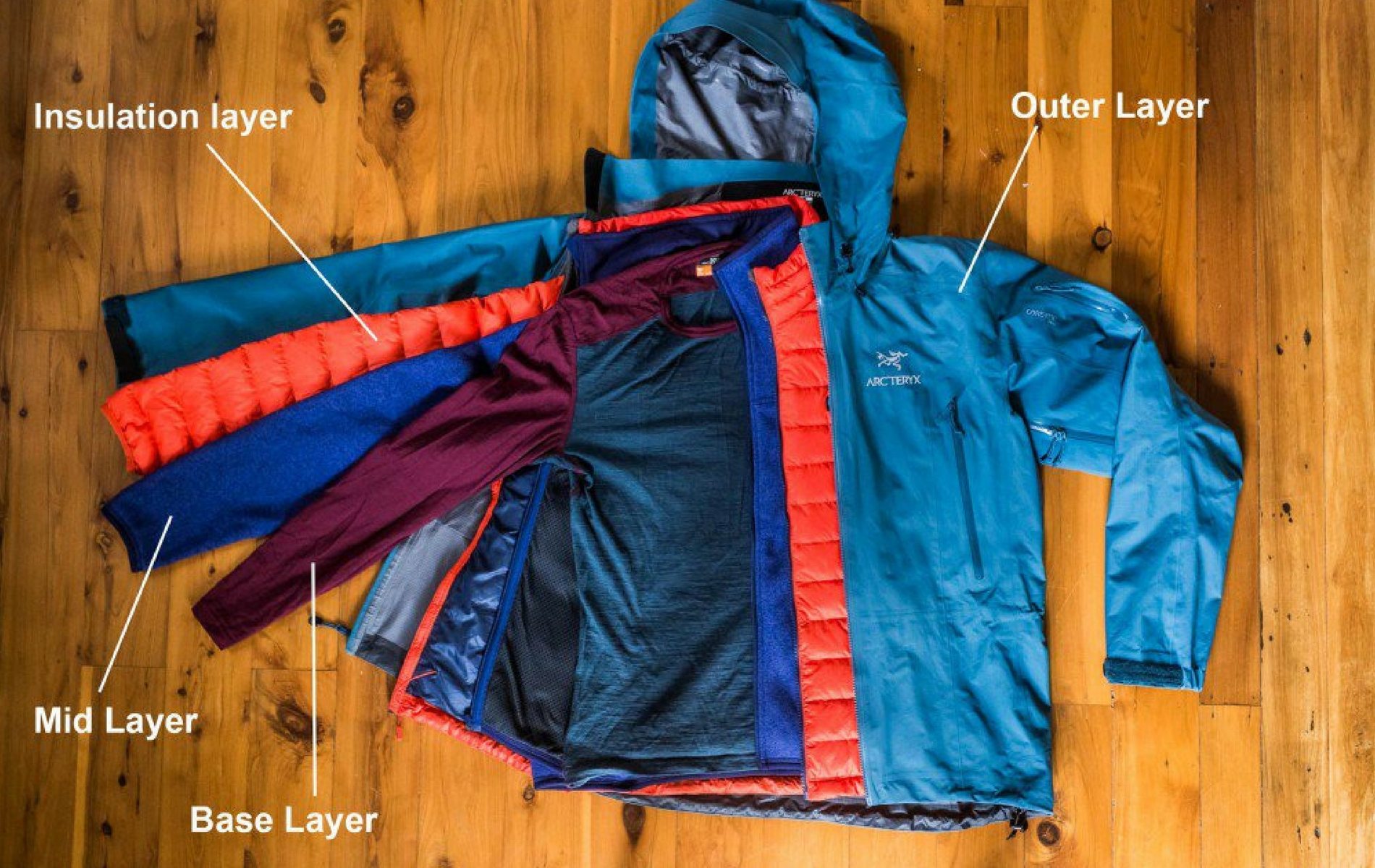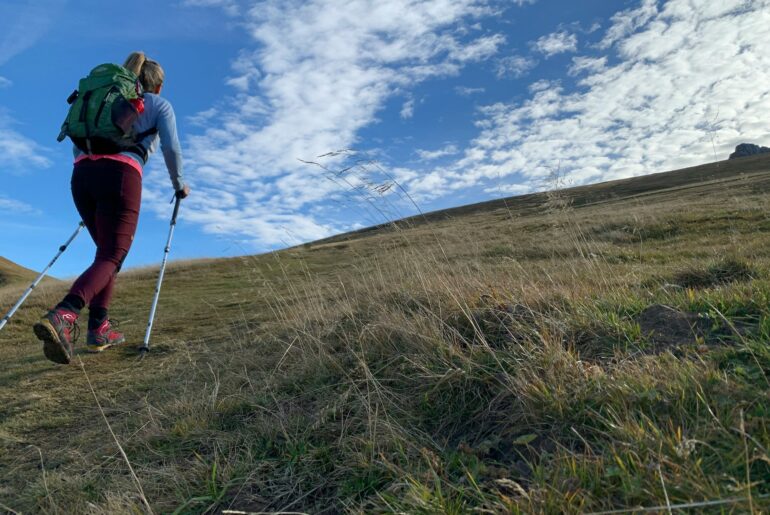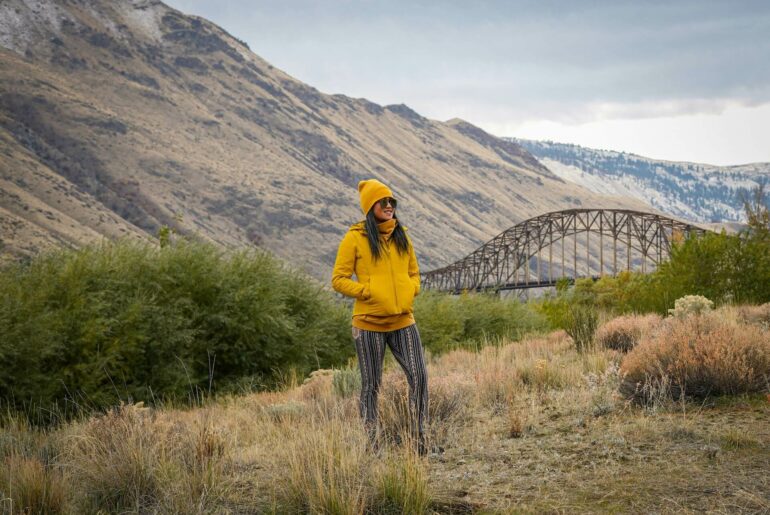As winter approaches and the allure of snow-covered hills beckons, ensuring you have the right outdoor clothing becomes paramount. Whether you’re venturing out for a casual winter hike or taking on a more demanding mountain trail, mastering the winter layering system is essential for staying warm, dry, and comfortable. This guide will walk you through the essentials of the winter layering system, explaining how to effectively combine base layers, mid-layers, and outer layers for optimal performance in any cold-weather scenario.
Understanding the Winter Layering System
The winter layering system is a strategic approach to dressing that involves wearing multiple layers of clothing, each with a distinct purpose. By carefully selecting and combining different layers, you can manage moisture, regulate body temperature, and protect yourself from the elements. The main components of this system are the base layer, mid-layer, and outer layer, each contributing to your overall comfort and safety during outdoor activities.
The Mechanics of Layering for Winter Hiking
The science behind the layering system is straightforward yet effective. By wearing several thin layers instead of a single bulky garment, you create air pockets that trap body heat, providing superior insulation. This method not only keeps you warm but also offers flexibility; you can easily adjust your clothing by adding or removing layers based on the weather or your activity level. To maximize the benefits, it’s important to choose materials that are moisture-wicking, breathable, and suited to winter conditions.
Why Layering Matters in Winter Outdoor Activities
1. Temperature Control: Layering allows for precise temperature management. As you ascend a hill or increase your activity, shedding a layer can prevent overheating. Conversely, adding a layer when the temperature drops ensures you remain warm.
2. Moisture Wicking: Effective moisture-wicking is critical in winter layering. Base layers made from moisture-wicking fabrics draw sweat away from your skin, keeping you dry and preventing the cold, clammy feeling that can lead to hypothermia.
3. Elemental Protection: The outer layer serves as your first line of defense against wind, snow, and rain. Paired with insulating mid-layers, your winter hiking clothes become a fortress against harsh weather conditions.
4. Adaptability: The beauty of the layering system lies in its versatility. By mixing and matching layers, you can adapt your outfit to varying weather conditions, ensuring you’re never caught off guard by sudden temperature shifts or unexpected precipitation.
How to Build an Effective Winter Layering System
1. Base Layer: The foundation of any winter layering system, the base layer is worn next to your skin and is responsible for managing moisture. High-quality base layers made from materials like merino wool or synthetic fabrics excel at moisture-wicking, ensuring sweat is quickly drawn away from your skin. For colder climates, opt for a thicker base layer to provide additional warmth.
2. Mid Layer: The mid-layer provides insulation, retaining body heat while allowing moisture to escape. Fleece, down, and synthetic insulations like PrimaLoft are popular choices for mid-layers. Depending on the conditions, you might select a lightweight fleece for mild days or a heavier down jacket for extreme cold.
3. Outer Layer: The outer layer, often referred to as a shell, is your shield against wind, rain, and snow. Look for jackets that are both waterproof and breathable to keep you dry without causing overheating. Hard shells are ideal for severe weather, while soft shells offer more flexibility and are suitable for lighter conditions. If you already own a suitable outer layer and want to learn how to maintain and restore it’s waterproofing, check out our blog on how to restore your jacket with Nikwax Tech Wash.
Base Layers: The Moisture-Wicking Powerhouse
A well-chosen base layer is crucial for any winter adventure. It works tirelessly to keep moisture off your skin, ensuring you stay dry and comfortable.
Synthetic Base Layers: These are excellent for high-energy activities due to their quick-drying properties. Made from polyester or polyamide, synthetic base layers are durable and effective at wicking moisture away from the skin.
Merino Wool: Renowned for its natural moisture-wicking abilities and breathability, merino wool base layers are ideal for varying temperatures. They also have the added benefit of being odor-resistant, making them perfect for multi-day trips.
Blended Fabrics: Combining the strengths of synthetic fibers with the natural benefits of merino wool, these blends offer enhanced durability and moisture management, making them a versatile option for any winter activity.
Mid Layers: The Insulators
Mid-layers are designed to retain heat while allowing moisture to escape, ensuring you stay warm without overheating.
Fleece Jackets: Lightweight and breathable, fleece is a top choice for mid-layers. It provides an excellent warmth-to-weight ratio and can be layered under a shell or worn on its own in milder conditions.
Insulated Jackets: When temperatures plummet, insulated jackets become essential. Down jackets offer unmatched warmth and compressibility but can lose their insulating properties when wet. Synthetic insulation, such as PrimaLoft, maintains its performance even in damp conditions, making it a reliable choice for unpredictable weather.
Outer Layers: Your Weather Shield
The outer layer in your winter layering system is designed to protect you from the elements while allowing excess heat and moisture to escape.
Waterproof Jackets: Essential for staying dry in heavy rain or snow, waterproof jackets made from materials like Gore-Tex are both breathable and water-resistant, making them a staple in any winter wardrobe.
Soft Shells: For less extreme weather, soft shell jackets offer flexibility and comfort. They provide wind resistance and light rain protection while being more breathable than hard shells, making them suitable for a range of activities.
Windproof Jackets: These are perfect for high-intensity activities in cold, windy conditions. Lightweight and packable, windproof jackets can be worn over a base or mid-layer to block out the wind without adding significant bulk.
Advanced Layering Techniques
Hybrid Jackets: For those looking for versatile winter hiking clothes, hybrid jackets that combine insulation with protective outer layers are a smart choice. These garments, such as the Jura Mountain Smock, provide the benefits of multiple layers in one convenient package.
Insulated Bottoms: In extremely cold conditions, insulated pants or vests can be added to your layering system for extra warmth without excessive weight.
Practical Tips for Layering Success
1. Start Cold, Warm Up: Begin your hike slightly underdressed. As you move and generate heat, you’ll warm up quickly, reducing the need to stop and adjust layers.
2. Test Your Layers: Experiment with different layer combinations during training hikes to discover what works best for you under various conditions. This way, you’ll be prepared when it really counts.
3. Choose Lightweight Layers: Opt for lightweight, packable layers that are easy to adjust on the go. This allows you to adapt to changing conditions without carrying unnecessary bulk.
Conclusion
Mastering the winter layering system is essential for any outdoor enthusiast looking to tackle cold-weather adventures. By carefully selecting and combining base layers, mid-layers, and outer layers, you can create a flexible, efficient, and effective outfit that keeps you warm, dry, and protected, no matter the weather. Whether you’re on a short winter hike or a multi-day mountain trek, the right layering strategy will ensure your comfort and safety throughout your journey. Of course, you must not neglect the rest of your clothing – check out this blog on choosing the right hiking socks.
Gear up for your next winter hike with our extensive range of outdoor clothing designed to optimize your layering system. From moisture-wicking base layers to insulated mid-layers and weatherproof outer layers, we have everything you need to conquer the great outdoors in winter.




